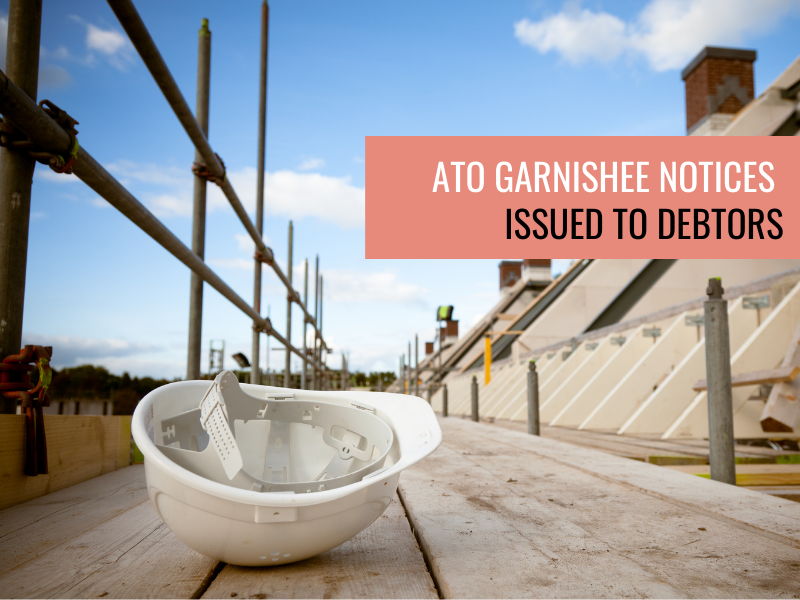
The ATO can issue a Garnishee Notice to someone that holds money on behalf of a company or individual or who may be liable to pay money to that entity. A Garnishee Notice requires the recipient of the notice to pay funds to the ATO in lieu of a company’s or individual’s taxation debts. This includes issuing Garnishee Notices to debtors who owe money to a company. But how does the ATO know who owes your company money and how do Garnishee Notices issued to debtors work in practice? In this article, we look at an example which answers these questions.
We were previously appointed Liquidators of a large company which operated in the building industry. The company owed around $12 million to the ATO and had been behind in its tax payment obligations for years. And over time the company’s debt to the ATO had slowly increased. The company had over the years entered into over twenty payment arrangements with the ATO, most of which it had breached. To assess the viability of some of these later payments the ATO had asked the company’s accountant to provide certain financial information for the company. This included things like financial statements, lists of creditors and importantly lists of debtors.
When the company defaulted on its last payment arrangement, the ATO knew who its major debtors were because of information the ATO had been provided with. The ATO used this information to issue four debtors with Garnishee Notices. The ATO did not know how much the debtors owed at the time, but this didn’t matter. It turned out two debtors owed the company over $600,000 each and two owed about $300,000, which they had to pay to the ATO.
The Garnishee Notices also provided the ATO with a “charge” (a form of security) over the debts owed to the company which meant the ATO became a secured creditor.
Once the ATO had issued these Garnishee Notices, the company lost all ability to pay its staff and other expenses and shortly after the notices were issued, the company was placed in liquidation.
Dealing with the Risks of Garnishee Notices
Given the risks and problems associated with Garnishee NoticeS, companies which fall behind in payment of their tax debts need to be proactive in their dealings with the ATO. If a company can enter into a payment arrangement with the ATO, then the ATO will not issue a Garnishee Notice while the arrangement is being complied with. The ATO also generally won’t issue a Garnishee Notice if they think a payment arrangement is being negotiated in good faith. However, as per the above example, there is a risk that if you provide information to the ATO about who your debtors are when seeking a payment arrangement, then the ATO can use that information to issue a Garnishee Notice to someone who owes you money.
Other Types of Garnishee Notices
We have previously written about the dangers of Garnishee Notices, with the two main targets for Garnishee Notices, other than debtors being:
- Banks, to garnishee funds in a company’s or person’s bank account, which can have a crippling effect on a business.
- People’s employers, who the ATO issue garnishee notices to for personal tax debts to garnishee a person’s wages.
Advice Regarding ATO Garnishee Notices
If you wish to discuss this article, or your circumstances, please don’t hesitate to contact Pearce & Heers Brisbane or Gold Coast office and our experienced staff will be able to assist you.

